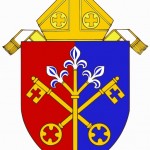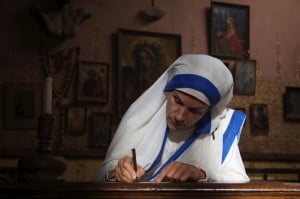When Cardinal Burke assumes his new responsibilities as Patron of the Order of Malta, he will take the helm of a charitable organization which was founded at the time of the First Crusade. For nearly a thousand years, the Order of Malta has continued its charitable works among the sick and the poor.
Who are the Knights and Dames of Malta, who will now benefit from Cardinal Burke’s spiritual guidance and leadership?
* * * * *
In the early years of this century, I was visiting Rome and found that the Knights and Dames of Malta had descended on the Eternal City at the same time. I remember that they were seated together at the Wednesday General Audience in St. Peter’s Square–their black capes and white crosses standing out against the sea of tourists.
“Who were these people of the cloak?” I wondered. They were resplendent in white and black, with the Maltese cross emblazoned on their cloaks.
The eight points on the Maltese Cross, also known as the Amalfi Cross, represent the eight lands of origin of the Knights Hospitaller: Auvergne, Provence, France, Aragon, Castille and Portugal, Italy, Baviere (Germany), and England (with Scotland and Ireland).
The eight points of the cross also symbolize the eight obligations or aspirations of the knights: (1) to live in truth; (2) to have faith; (3) to repent one’s sins; (4) to give proof of humility; (5) to love justice; (6) to be merciful; (7) to be sincere and wholehearted; and (8) to endure persecution.
The Order of Malta was created in the Middle Ages, and is both religious and sovereign. Most of the other Orders of chivalry existed solely to provide military protection; so they disappeared once the reason for their existence ceased. The Order of Malta, however, had both a military and a hospitaller (charitable) function; so the Order has remained active throughout the centuries, helping the sick and the poor.
At its founding, most of the Religious Knights came from chivalrous and noble Christian families. Today, however, the Knights of Malta belong to all classes of society. The members of the Order are Catholics, enlivened by altruistic nobleness of spirit and behavior.
All Knights of Malta must meet the traditional requirement for bestowing of knighthood: they must distinguish themselves as men of virtue. The Order continues to uphold moral values, characterized by a spirit of service, sacrifice and discipline. Battles are no longer fought with swords, but with the peaceful tools of the fight against disease, poverty, social isolation and intolerance. The Knights of Malta also witness to and help to protect the faith.
All the 13,500 Knights and Dames of the Order of Malta are expected to conduct themselves so as to give Christian example in their private and public lives, thus maintaining the tradition of the Order. They work together in the Order’s hospitaller and social works. The Order of Malta operates hospitals and medical centers, emergency corps and ambulance services, and institutions for the elderly and disabled. They provide humanitarian assistance around the world, and provide grants through the organization’s Global Fund for Forgotten People.
The Three Classes
According to the Constitution of the Order, the members of the Order of Malta are divided into three Classes. The members are expected to conduct their lives in an exemplary manner in conformity with the teachings and precepts of the Catholic Church and to devote themselves to the humanitarian assistance activities of the Order.
Members of the First Class are Knights of Justice, or Professed Knights, and the Professed Conventual Chaplains, who have made vows of “poverty, chastity and obedience aspiring to perfection according to the Gospel”. They are religious for all purposes of Canon Law but are not obliged to live in community.
The members of the Second Class, by virtue of the Promise of Obedience, are committed to living according to Christian principles and the inspiring principles of the Order. They are subdivided into three categories:
– Knights and Dames of Honour and Devotion in Obedience
– Knights and Dames of Grace and Devotion in Obedience
– Knights and Dames of Magistral Grace in Obedience
The Third Class consists of lay members who do not profess religious vows or the Promise, but who live according to the principles of the Church and the Order. They are divided into six categories:
– Knights and Dames of Honour and Devotion
– Conventual Chaplains ad honorem
– Knights and Dames of Grace and Devotion
– Magistral Chaplains
– Knights and Dames of Magistral Grace
– Donats (male and female) of Devotion











